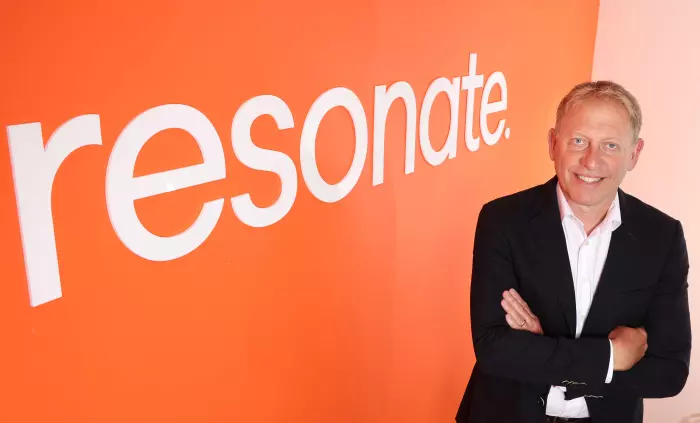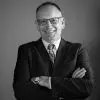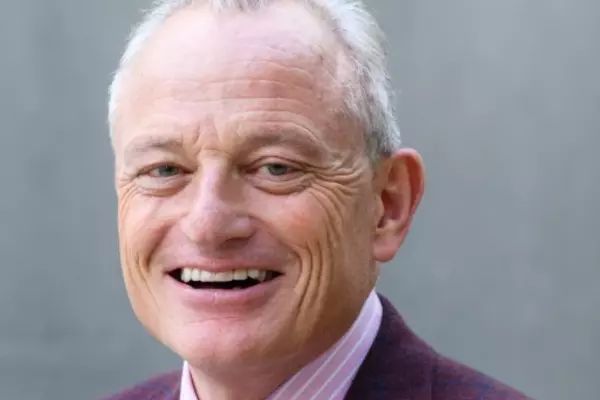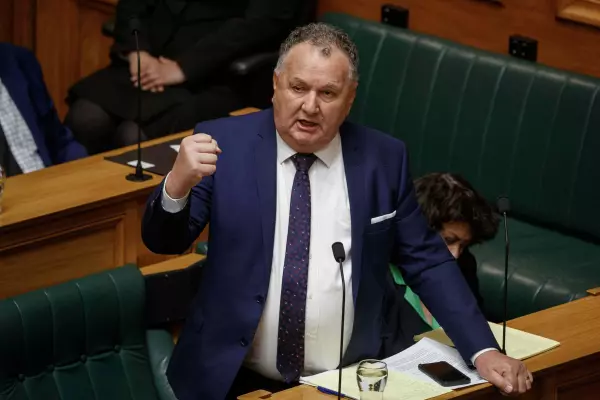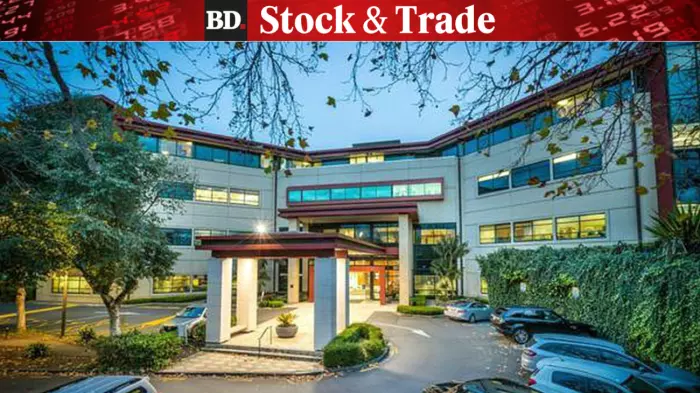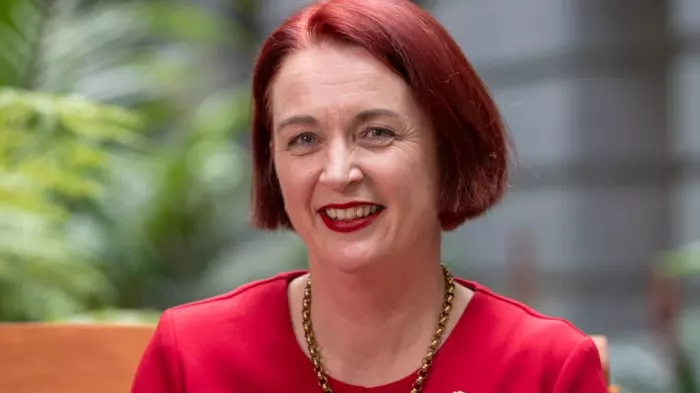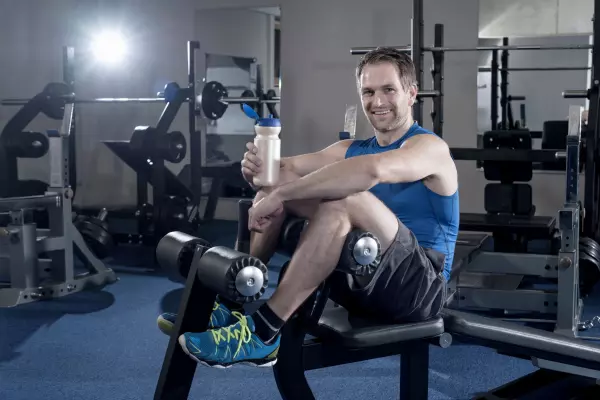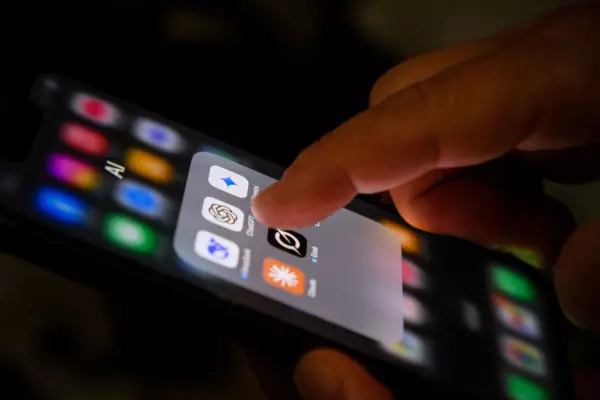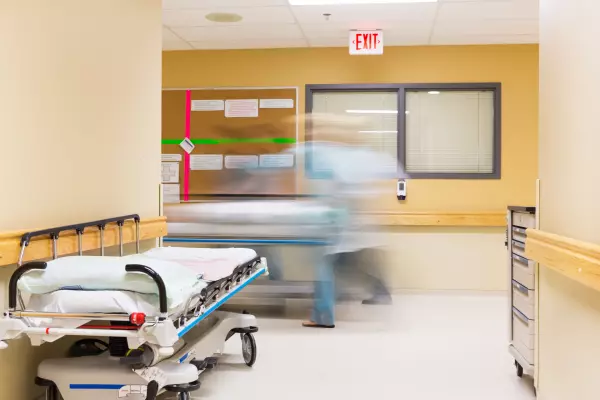James Whittaker never planned to get into the hearing business.
The former British Airways executive who moved here in 2008 got his first job in this country, not to mention in the audiology sector, through an act of desperation.
With a six-month visa, six months’ funds and a young family, he feared he’d flubbed the interview, so surprised himself by offering to buy his prospective employer dinner.
“I had to get that job,” he told BusinessDesk, speaking from a bright orange-hued back room at a North Shore branch of Resonate, the firm he founded to disrupt the audiology sector by offering a single, top-of-the-range hearing aid on a flat $90-a-month subscription.
Other audiology firms charge up-front for a pair of aids that can routinely cost $8,000 to $10,000, even with the six-yearly government subsidy of $1,022.22 a pair. While Specsavers has recently entered the market with models at around $6,000 for a pair, this is the only subscription offering.
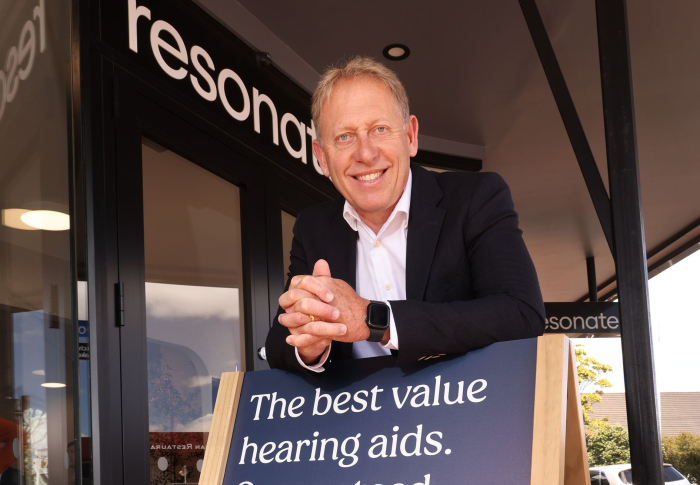
Resonate stores are intended to give off a casual, "unhealth" vibe while providing health advice through hearing diagnostics (Image: Supplied)
30 stores in 30 months
To show how confident he is about this model, his goal has been to open 30 Resonate branches in 30 months.
He’s very close, which is all the more impressive since, for most of those 30 months, NZ was in recession.
Next week’s opening in Wellington’s Willis Street will be the 29th branch in 29 months.
Plans for the 30th, in Lower Hutt, were well-advanced when he spoke to BusinessDesk in April.
He won’t say what it’s cost his backers, the Auckland-based private equity investor group Tahua Group, to get to this point, nor when a subscribing customer reaches break even, though he says it’s shorter than my guess of “somewhere between five and 10 years”.
However, he says the reason that Tahua – backers of Starbucks and Burger King franchises in NZ, No 1 Shoes, and Torpedo 7, among other well-known retail brands – got involved was because this was “not what you call a typical start-up”.
Proven model
Not only did Whittaker have 16 years of experience in the audiology business, running Bay Audiology and then Triton Hearing, but he also successfully trialled the subscription model at Triton.
He is circumspect about why Triton pulled the plug.
Reading between the lines, the multi-national hearing aid manufacturer and owner of Triton, London Stock Exchange-listed Sonova, may have seen this off-piste NZ experiment as too hard a sell with shareholders because the cash flow is stretched over years instead of being delivered on the date of purchase.
Whatever the reason, that’s fine by Whittaker.
The global hearing aid market is largely sewn up between four main suppliers, and he sees almost no other audiology business anywhere giving up cash flow in favour of the lifelong customer relationship required by a subscription model.
Yet Whittaker believes this relationship is vital to the future of the sector.
Selling health, not hearing
Where others are selling hearing aids, he says he is selling healthcare.
“It’s not a SaaS (software as a service) model,” he says. “It is high tech, high touch. You don’t get to skimp on people. It’s not scalable that way.”
He targets customer satisfaction metrics at least 10 points higher than competitors because his concept is that hearing health becomes a personal service first and a hearing aid subscription second.
To put their money where their mouth is, customers can cancel their subscription at any time and return the aids. He will have banked the government subsidy up-front, but the risk of the lifetime value of the aid not being recovered sits with the impact on customers’ lives.
He hopes, eventually, that government funding may become available for subscription aids as well, and is collecting the data to back such an approach.
“I can tell who’s wearing the hearing aids, how long they are wearing them for, and how many are carrying on with their subscription. That, to me, is an outcome for a government funding model because if I sell you devices and they sit your top drawer after three months, that’s a terrible outcome for the Government.”
Employment brand
In fact, the quality of the audiologist workforce at Resonate is, he suggests, part of its secret sauce. There is a very a tight market for audiology skills. Barely 18 audiologists are trained annually in NZ and anyone coming from offshore faces years of certification.
Yet, Whittaker says he has “people queuing up to work for us”, arguing that professional hearing clinicians are attracted to the Resonate model because they are under no pressure to actually sell a hearing aid.
In most audiology businesses, Whittaker says, “an audiologist is essentially trying to assess your hearing needs and the size of your wallet”.
While there is clearly marketing spin in this claim, Whittaker insists that his audiologists are “not selling anything at all”.
Instead, their mission is to give customers a far deeper understanding of their hearing health than has traditionally been offered.

Hearing loss can be an indicator of other lifestyle and health issues. (Image: NZME)
Hearing as harbinger
A focus on “healthy aging” gets customers focused on links between hearing loss and factors such as cognitive decline, the onset of dementia, and the development of health issues created by the social isolation that deafness can cause.
In partnership with a research body in Boston and the Danish firm GN Resound (GN), which also supplies the hearing aid that Resonate offers, audiologists conduct an “ear360 assessment”.
“We’re looking at cognitive load and cognitive decline”, particularly using speech markers that allow cognitive load assessment.
“It’s the pitch, the tone, the strength” of the eight markers of a person’s speech that indicate cognitive load and which feed into an assessment of aural health that comes before the question of whether or not a hearing aid is required.
Whittaker reckons Resonate is already changing the market.
“If you look at the advertising since November 7th, 2022 (when Resonate first opened a clinic), it’s completely changed in New Zealand already. Everybody’s talking about hearing healthcare. They’re not talking about hearing aids anymore.”
Any model you like, as long as it's this one
Which brings us to perhaps the most intriguing part of the Resonate model: it only offers one model of hearing aid: GN’s top-of-the-range product with multiple settings for different environments, Bluetooth controls from a smartphone, and soon, AI-enhanced noise suppression.
Why just one model?
For a start, it makes inventory management very cost-effective and allows Resonate to negotiate keenly for volume on a single model.
However, the main reason is that Whittaker thinks anyone who can afford $90 a month might as well have the best.
“Other providers of devices will proclaim that three (models to choose from) is really important because that gives the customer choice,” he says. “Well, I don’t believe the customer wants choice. The customer wants a professional recommendation of the device that’s going to work with their hearing.”
Resonate’s GN model works for a wide range of customers, “but I can guarantee you we have sent people to other providers if we do not believe that GN Resound product is right for that customer”.
“My view is that if you want to prioritise your hearing … you could probably find the 90 bucks a month. But you have to be motivated enough. That’s kind of a filter for us.”
By making hearing aids affordable and attaching the decision to use them to a more holistic health equation, Whittaker believes he can both “democratise hearing technology” and overcome the stigma that many associate with wearing the aids.
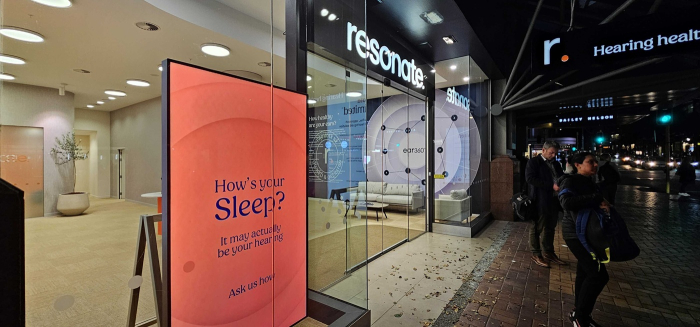
A Resonate store in Willis St ahead of its opening for business. (Image: Pattrick Smellie)
Growth market
Finally, Whittaker is bullish on growth in this market.
“About 225,000 people are wearing hearing aids”, but as many as 300,000 more people may need them, according to some estimates, and every year, about 50,000 people buy either new or replacement hearing aids.
The combination of an ageing population, the rise of hearing damage among the “headset generation” and from industrial workers means the addressable market grows at a rate of about 3% to 5% annually.
While there is a market in very cheap hearing aids that essentially just turn up the volume and nothing more, he says these are a “gateway drug” for the real thing.
In other words, there is plenty of room for growth without taking market share from competitors, Whittaker reasons.
Exportable model?
This capital-intensive approach requires both up-front payment for hearing aids and the construction of retail outlets in high street locations – Whittaker particularly likes sites abandoned by banks.
That makes it far too early to consider expanding Resonate to other territories.
However, Whittaker is a man in a hurry, with a glint in his eye.
“Once I’m comfortable with all of those different metrics, obviously it makes you a little bit more certain about how it would transport, but the focus at the moment is to carry on what we’re doing in New Zealand.
“Once you capture a certain amount of volume, your fixed costs are covered, and that’s what makes it such an attractive option, but it’s painful to get there.
“And getting there is key.”


